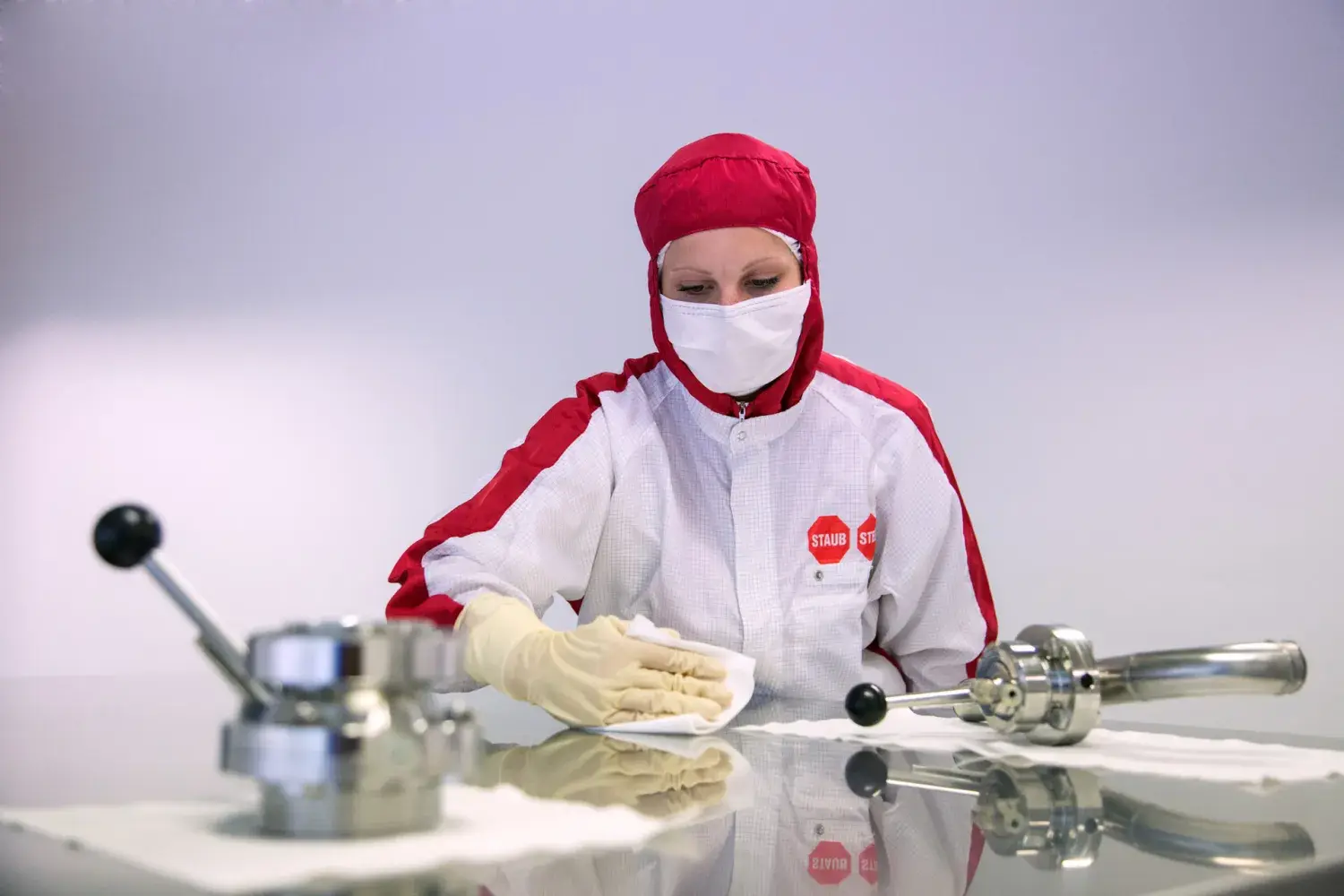The tenacity of the coronavirus
Currently, nobody knows exactly how long SARS CoV-2 - as the virus is correctly named - "survives" on surfaces or, better, how long SARS CoV-2 remains infectious on a surface. This depends on its tenacity. This refers to biological toughness or resistance to environmental influences.
However, the question of how long the virus remains active is very important, especially at this time, and in the cleanroom. It can only be answered by conducting experiments. There could be the following possibilities:
- "Genetic" detection: Comparable to the corona test on patients, a sample ("smear") from the surface is used to measure how much of the virus’ genetic information, known as RNA, can be detected. This allows us to know whether the virus is or was present. However, the result does not tell us anything about whether the virus is actually still infectious.
- Biological cell detection: The sample, including the virus, is added to a cell culture. The virus infects the cells, causing them to change or die. These changes can be viewed with a microscope. If different dilutions – known as titre levels - of the virus sample are added to the cells, quantitative information on the infectious potential is obtained. If the surface is examined at different time intervals, information can be obtained on how long the virus can remain infectious.
In fact, there is little data on the tenacity of SARS CoV-2. For the closely related coronaviruses SARS CoV-1 (causative agent of the pandemic 2002/03) and MERS (Middle East Respiratory Syndrome, causative agent of the epidemic on the Arabian Peninsula in 2012), a tenacity of up to 120 hours could be demonstrated in experiments.
The data for the various coronaviruses differ greatly. With regard to the environmental conditions, however, it is clear for all viruses: the tenacity decreases
- with increasing ambient temperature
- with rising humidity
- with low "load", i.e. number of viruses / unit area
The table summarizes the "survival times", i.e. the tenacity determined for different surfaces.
References: 1) CHAN et al. 2011; 2) DUAN et al. 2003; 3) LAI et al. 2003; 4) VAN DOREMALEN et al. 2013; 5) VAN DOREMALEN et al. 2020
In summary, this means that:
The data unanimously show a high tenacity for the SARS CoV-2 virus, particularly on plastic and stainless steel surfaces. In principle, effective barriers already exist against the penetration of viruses into cleanrooms. However, the high "survival times" of SARS CoV 2 demand and justify further measures for surface disinfection in the cleanroom itself as well as in the access area, so that the distribution of the virus across contaminated surfaces can be limited. This applies in particular to surfaces that are frequently contacted, such as door handles, switches, door surfaces or seating. Since CoV-2 is an enveloped virus, "limited virucidal" disinfectants are suitable for additional disinfection measures. These are based on ethyl alcohol and/or isopropyl alcohol, are easy to use and reliably inactivate SARS CoV-2.
CWS Reinraum Akademie
Rosa-Luxemburg Straße 12-14
04103
Leipzig
Deutschland

